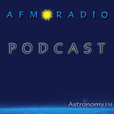
Summary: Show Notes for the 12th of March 2013 (GMT) Title: Pan-STARRS and New Stars Hosts: Ryan, Lianne, Paul Kicking off Astronomy Night in Canada, the humble hosts of York Universe chatted about the VERY soon to be Cmdr Chris Hadfield. Come Pan-STARRS, part of our show name, is gracing the skies beautifully in both the north and the south (but better observed from the south). A new star system is discovered in our backyard, and astronomers perform reconnaissance of another solar system. Check out the show notes and podcast to see/hear the details. This week in space/astronomy history: * 10 March 1977 - Astronomers discover that Uranus has rings (Elliot (http://en.wikipedia.org/wiki/James_L._Elliot), Dunham, Mink (http://en.wikipedia.org/wiki/Douglas_J._Mink)). There is a good infrared (IR) version of the images here (http://fb.me/zepecTpp ). Uranus was the second planet where rings were discovered. * 14 March 1879 - Happy Birthday to Albert Einstein, and Pi Day. * 11 March 1997 - Ashes of Star Trek creator, Gene Roddenberry are launched into space. News: 1. Chris Hadfield to take command (http://www.nasa.gov/mission_pages/station/expeditions/expedition34/e34_031213.html) of the International Space Station on Wednesday 13 March 2013. Hadfield's twitter feed continues to grow, starting near 20 000 followers before launch, now at >500 000. 2. Observe Comet Pan-STARRS right now! This comet can be seen from the Northern Hemisphere low in the western sky and has already been spotted in Southern Hemisphere skies. It is low in the west just after sunset. There are many viewing guides online. 3. 'Curiosity Corner' with Ryan Marciniak - http://www.universetoday.com/100579/solar-storm-blasting-to-mars-shuts-down-curiosity-1st-rocky-sample-results-on-tap/ (http://www.universetoday.com/100579/solar-storm-blasting-to-mars-shuts-down-curiosity-1st-rocky-sample-results-on-tap/) Major Topics Covered: 1. Chinese Space Debris Collides with Russian Satellite The Center for Space Standards and Innovation (CSSI) has determined that on January 22, 2013 debris from the Chinese FENGYUN 1C collided with Russia’s BLITS satellite. The FENGYUAN 1C is the satellite that was destroyed by China on January 11, 2007 in a test of an anti-satellite missile. The collision changed the orbit of the Russian satellite, along with its spin velocity and attitude. The collision wasn’t reported until February 4, 2013 when engineers at the Institute for Precision Instrument Engineering (IPIE) in Moscow reported to CSSI a significant change in the orbit for their BLITS satellite. BLITS is tracked to high precision by the International Laser Ranging Service (ILRS), and IPIE had detected a sudden decrease of 120 meters in the semi-major axis of its orbit and a change in its spin velocity and attitude. http://blogs.agi.com/agi/2013/03/08/chinese-space-debris-hits-russian-satellite/ (http://blogs.agi.com/agi/2013/03/08/chinese-space-debris-hits-russian-satellite/),http://www.universetoday.com/100608/chinese-space-debris-collides-with-russian-satellite/#ixzz2NGaG9hVa (http://www.universetoday.com/100608/chinese-space-debris-collides-with-russian-satellite/#ixzz2NGaG9hVa) Space Cleanup: http://www.guardian.co.uk/science/2012/feb/15/swiss-create-janitor-satellite-space-cleanup 2. Closest Solar System Found in a Century http://www.sciencedaily.com/releases/2013/03/130311124052.htm (http://www.sciencedaily.com/releases/2013/03/130311124052.htm) A pair of newly discovered stars is the third-closest star system to the Sun Distance of 6.5 light years from the sun So close that Earth’s television transmissions are 2006 are now arrive there! The duo is the closest star system discovered since 1916 the close-up views of this binary system we can get with big telescopes like Gemini and the future James Webb Space Telescope will tell us a lot about the low mass stars known as brown dwarfs
